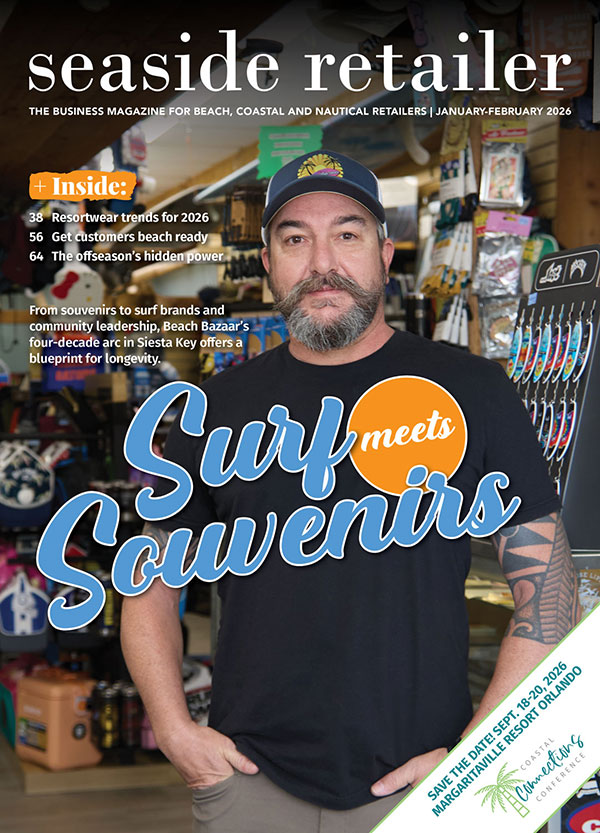
In 2011 I was invited to Campbell River, a marina resort town in Northern Vancouver Island. Back then, Ocean Pacific Marine Store carried a variety of product lines ranging from exquisite boat-themed giftware to essentials for boat care and parts.
I worked with the team there to create a shop layout that ensured full shop penetration that also created a focal area to showcase giftware separate from marine craft essentials.
Fast forward 10 years later and I am back in Campbell River. Vicky McNeil, the associate in charge of the sales floor has done a wonderful job of maintaining the layout as well as the sign hierarchy we had set back then.
The grid style layout for essentials allowed for easy access to all products with signage making them easy to find. A grid layout is one similar to a grocery store where aisles are set and each gondola fixture sports signage indicating the products one expects to find contained within.
The gift section was set as a mini racetrack, thereby flanking shoppers on either side as they walked through the section. A racetrack layout provides shoppers a looping path that brings them from one entry point and around before exiting the section.
The center nesting tables prominently display either seasonal gift items, higher-priced merchandise or both.
These two layout types found within one selling space is referred to as a combination layout. A combination layout makes the selling space accessible and functional while ensuring that differing product categories are given their due sections that support product values.
The biggest challenge back then, was the location of the main entrance and checkout counter. During that time, the entrance was off to the front left side of the building and the cash register to the right of the entry door. The first thing customers usually saw was the checkout counter.
I strongly felt that allocating a prime selling area that receives the most views is wasted with this type of arrangement. Shoppers walking in do get immediately acknowledged, however, welcoming can be done even when the cash counter is located elsewhere. Shop associates simply need to be proactive in ensuring that shoppers are immediately greeted regardless of where they are and whatever task they are performing.
"A combination layout makes the selling space accessible and functional while ensuring that differing product categories are given their due sections that support product values."
I am glad to say that over the years, they were able to move the main entrance to the center of the storefront. This ensured that as customers walked in, they immediately found themselves in the prime feature area of the selling space. The cash counter has relocated to the far left allowing the team to still have a good view of the shoppers as they walk in without getting in the way.
Vicky McNeil still refers back to the layout binder we created 10 years ago. This has worked well then and continues to work well now. The benefits of investing in an effective shop layout, correct entry point and checkout location is evident everyday by how well the shop performs.

